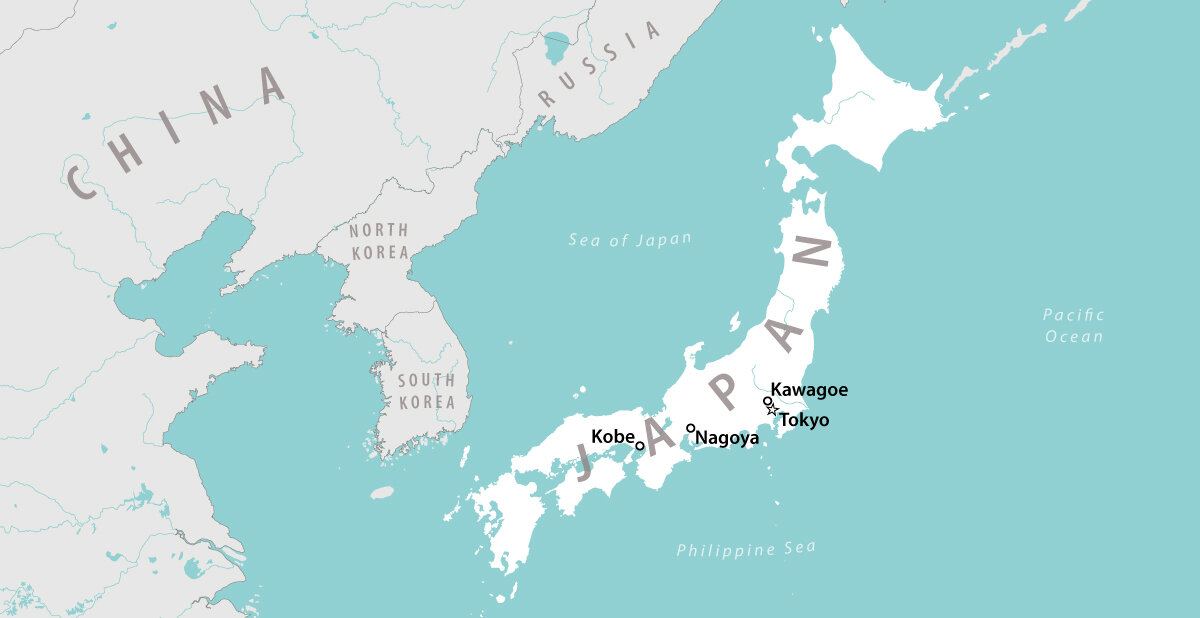Children’s cafeterias nourish a sense of community across Japan
Loading...
| NAGOYA, KOBE, and KAWAGOE, JAPAN
Fried chicken is on the menu, so the children let out a cheer.
Preschoolers and primary school students are filing into Children’s Cafeteria Qchan for a hot dinner in a bustling district of Nagoya in central Japan. The glass-walled cafeteria is welcoming and kid-friendly, with a spacious open kitchen and an aquarium stocked with colorful tropical fish.
“Meals here are well-balanced and very, very delicious,” 9-year-old Hasegawa Ichika says with a broad smile while picking up vegetables with her chopsticks. “We also get fruit and dessert.”
Why We Wrote This
The number of children’s cafeterias, also known as ibasho – or, “places where one feels accepted” – have increased exponentially across Japan in the past decade as grocery prices rise and residents cope with loneliness and isolation.
Every weekday for more than five years, the cafeteria has provided free or low-cost homestyle meals to children and other members of the community. The number of such cafeterias, also known as ibasho – or, “places where one feels accepted” – have increased exponentially nationwide in the past decade. There were 10,867 in the previous fiscal year, up from 319 in fiscal 2016, according to data cited by Musubie, a network that supports these mostly private-sector initiatives.
The cafeterias are run by parents and nonprofit groups, and staffed by armies of volunteer cooks and servers, including retirees and college students. Many cafeterias also distribute rice and produce to needy families. The ibasho surge comes as grocery prices rise in Japan and as residents struggle to cope with isolation and loneliness.
Multigenerational exchange
Que Holdings Corp., a local funeral service provider, operates the Qchan cafeteria with the help of a wide array of volunteers, including a barber, a professional wrestler, violinists, and traditional tea ceremony practitioners. Food donations come from across Japan, says Fujie Yumiko, Qchan’s chief chef.
“Thankfully, we receive corn from Hokkaido, vegetables from Takayama, and tuna from Okinawa,” she notes. “Supporters say, ‘You need these [donations] because you run the cafeteria five days a week.’”
At the Mutual Support Network, a children’s cafeteria in the western city of Kobe, nonagenarian Murakami Sata volunteers to teach children origami after lunch, while university students and retired teachers tutor primary students and middle schoolers. Many cafeterias have therefore been a hub for multigenerational exchange, which operators say helps children’s social development.
Yuasa Makoto, a prominent anti-poverty activist and the founder of Musubie, is behind the nationwide expansion of children’s cafeterias. He says his group appreciates a groundswell of support from farmers and companies as they continue to donate rice despite inflation. “In provincial areas, many cafeterias have never bought rice, thanks to such donations,” Mr. Yuasa says.
At Misora Children’s Cafeteria in Kobe, dozens of children and some parents have hot meals in an 880-square-foot straw-matted room twice a month. Nakayama Yu says her preschool-aged daughter Yuri “has a pretty good appetite when eating with many others here.” Yuri also likes the cross-cultural events organized by university student volunteers.
Asahi Kazuyo launched the cafeteria in 2019 to help ease the burden on working parents and keep children from eating alone. Ms. Asahi says some of the mothers who came to the cafeteria confided to her a number of complex problems, including their children’s school absenteeism. So she has invited experts to Misora to speak to mothers, educators, and care workers.
Japan’s government set up an office to address loneliness and isolation in 2021 as these issues worsened during the COVID-19 pandemic. The number of children who died by suicide hit a record high of 529 in 2024, the worst among the Group of Seven industrialized countries, according to Japan’s Ministry of Health, Labour and Welfare. Overall suicide figures, however, have declined.
The power of social interaction
Japanese mothers, who shoulder the lion’s share of raising children, “tend to be isolated as more people get less involved with communities and even their relatives,” says Yoneda Sachiko, a consultant with the Children’s Future Support Office in Yokohama.
Ms. Yoneda, who also teaches at Kanto Gakuin University, recalls she had a feeling of stagnation while raising her own children. “So did children [in my community], which drove me to act,” she says.
Koike Manami, the head of a nonprofit in Kawagoe, north of Tokyo, first established a children’s cafeteria in May 2023. Now she runs three sites and also organizes games and plays for child-rearing families.
“It takes a community to raise a child,” Ms. Koike says. “I would like every member of a community to give lots of love to children.”
Mr. Yuasa says children’s cafeterias have also helped rebuild communities as they create opportunities for locals to interact with one another.
Gidou Kazuyoshi agrees. He leads the nonprofit group Hinatabokko in the town of Shiranuka on Hokkaido, about 550 miles northeast of Tokyo. Like many other rural areas in Japan, Shiranuka faces an aging society and depopulation. Mr. Gidou started a children’s cafeteria in 2019 after severe illness kept him from working for 11 years. “During my recuperation, I made up my mind to do something for others,” the octogenarian recalls. “Social connections are absolutely necessary for these children.”
Every Sunday, volunteers in their 70s and 80s cook lunch for children and older residents, while the group distributes bento boxes to more than 130 single-parent households three times a month. Other residents also volunteer to tutor children, he says.
Back at Qchan, Ms. Fujie, a flamenco dancer who has two grown daughters, wants the cafeteria’s work to have lasting effects.
“My hope is that, when these children grow up and remember this place,” she says, “they will decide to give something back to their communities.”






